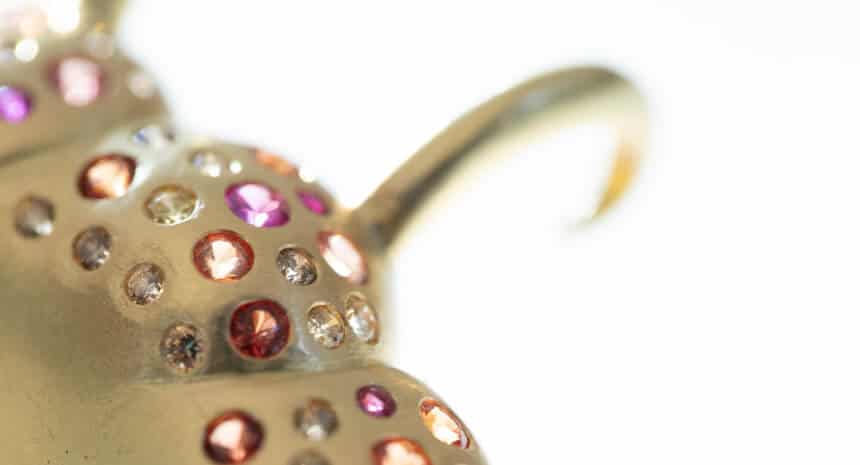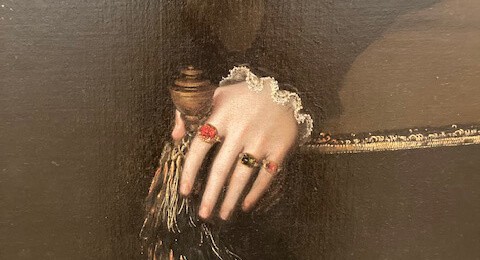
Jewellery
‘Learn from the oriental shell to love the enemy.
And fill with pearls the wound over which you wept.’
(Hafez, Persian poet, 1315-1390)
Adorning oneself in jewellery is one of the oldest forms of human self-expression and identification. Pierced shells, plant and animal matter, stones and fibres dyed with natural pigments (ochre, ash, berries) serve as some of the oldest existing examples of jewellery. Jewellery lives in the threshold between public and private, and it is in this space, at once intimate and performative, that much of its magic lies.
And the myth
What might we say about a language that is both universal and so rarified; about a language that contains such vast multitudes? Secrets, beliefs, superstitions, family stories, national histories.
In many cultures, amulets, special stones in certain colours, have been, and continue to be employed as protection against danger and misfortune. Coral and amber are said to guard children and babies, and moonstones protect women during menopause. Green gemstones are worn for their detoxifying qualities, and, since the Middle Ages, red rubies have been considered stones of life.

Gold, stones, shards
The long history of jewellery knows many faces, heads, décolletés. It knows tribal princes, kings, moguls, shahs, noblewomen, princesses and punks. In Pharaonic Egypt, the colour gold was considered the colour of immortality; flesh of the gods. In ancient Greece, coral was thought to be the fossilised blood of the Medusa, whilst pearls were dew drops that had fallen into opened oyster shells.
It was not until the beginning of the C.17th that the mystery of pearl formation was unraveled in Portugal. Three hundred years later, the first cultured pearls appeared on the market. Today, the pollution of international waters threatens to permanently compromise this natural process, that has been so often alluded to in Persian poetry.
At the turn of the C.20th European jewellery artists of the Art Nouveau displayed a preference for more democratic materials, dispensing with the notion that high-quality jewellery and precious gems were synonymous with one another. The use of coloured glass in place of rare stones for example, supported a shift away from direct correlations between the value of a piece of jewellery and its material worth.
Priceless treasures
In one peculiarity though, jewellery asserts itself beyond fashion, trends and time periods: it wants to be worn. Every piece of jewellery that is worn encloses a dimension that the gold scales are not equipped to measure. Jewellery can retain memories and feelings, bear witness to historical events, mark the passing of time, or indeed transcend linear time altogether in the process of being melted down and being redesigned. Often jewellery passes from one hand to another. It is inherited, gifted, stolen or lost and found. It also is constantly carried around, on fingers, ears, wrists, in front of chests. Thus, even a seemingly disposable bracelet retrieved from a gumball machine can in its spirit be traced back to the nomadic spirit of our earliest forefathers and mothers.
In its etymology, the German word ‘schmücken’; to adorn or decorate, contains several older words (to secretly snack, to embrace, to nestle or dress delightfully). All these notions contribute to a complex definition of what a piece of jewellery can be, and the many and varied roles it plays in the lives of those lucky enough to wear it.